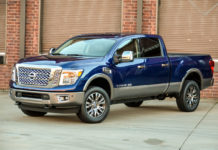The more than 10,000 owners who give their cars cutesy names such as “Peaches” and “Spike” and treat them like pets felt awkward having their tiny cars wedged between costly BMWs at dealership service lines. A BMW executive says Mini owners “felt like second-class citizens.”
So when the first J.D. Power and Associates Customer Service Index ranked Mini 39th in 2005, headquarters knew something had to be done. It was the first year Mini was eligible for the highly regarded survey since the brand went on sale in the United States in March 2002. The survey measures satisfaction with dealership maintenance work in the first three years of ownership.
The solution wouldn't be simple. Only eight of Mini's 80 dealers are stand-alones. The rest are within BMW stores.
So Mini borrowed practices from the hotel industry, such as leaving Mini-branded mints on the seats after service. And it urged dealers to separate Mini service from BMW — but in a way that would not require a major investment.
Big jump in score
The program called for Mini signs, new clothing for service technicians and special service and waiting areas. Most dealerships also added dedicated Mini service personnel.
After 25 to 30 percent of Mini dealers made changes, the brand's Customer Service Index score jumped to ninth in the 2006 J.D. Power survey, which was released last month. Mini was the most improved brand in this year's rankings, moving up 46 points, to 890 out of 1,000. The industry average was 873.
“When we first launched, we knew we had had a good brand and purchase experience. But Mini owners felt they were second-class citizens in the service area,” says Richard Steinberg, manager of aftersales and product strategy for Mini, in Woodcliff Lake, N.J. “We were getting dinged by quality at the service level.”
The shared service areas were a fact of life Mini had to deal with, says Steinberg. “We knew we could not do brick and mortar,” he says. “So we looked at facilities, personnel and branding.”
The changes were aimed at the attitudes that Mini owners have toward their cars, Steinberg says. “A Mini owner wants to be involved and acts like he is taking the dog to the vet,” he says.
“We didn't add any dealer points but were able to improve within the existing physical structure. We tried to knock off each one of the symptom areas on J.D. Power, one by one.”
Even the waiting area made a difference, he says.
“A lot of the Mini guys didn't like waiting in the white-and-gray BMW area watching the BMW guys watching CNN, so they'd wander back into the Mini showroom.”
Tom Schwartz, owner of Cincinnati Mini in Cincinnati, says he has radically changed how Mini owners are treated. He started before Mini began its program and was the inspiration for some of the ideas.
“It is working very well — Mini is now 25 percent of my total business,” says Schwartz. “People who name their cars need to be treated much better than someone who throws you the keys and says, 'I'm late for a meeting.'”
Cues from hotels
Mini didn't stop there. “We took tips from the hospitality business,” says Steinberg.
Leaving mints on the seat was one step. And, as hotels wrap toilet seats with paper to show that they have been cleaned, Mini now wraps vehicle steering wheels with paper.
Instead of putting a sticker on the windshield indicating when the next oil change is due, Mini has developed a series of stickers that go in the same place. The sayings include: “Don't be afraid of nicks and dings. Scars are sexy.”
Mini still has to deal with problems such as geography. Between 10 and 15 percent of its owners have to drive 50 miles to the dealer, says Steinberg.
Because Minis aren't as scarce as they were two years ago, many dealers now provide Mini loaner cars, he says.
But some dealers have come up with even more innovative solutions.
Schwartz offers to drive Mini owners back to work or home and then bring them back to the dealership when the car is ready.








